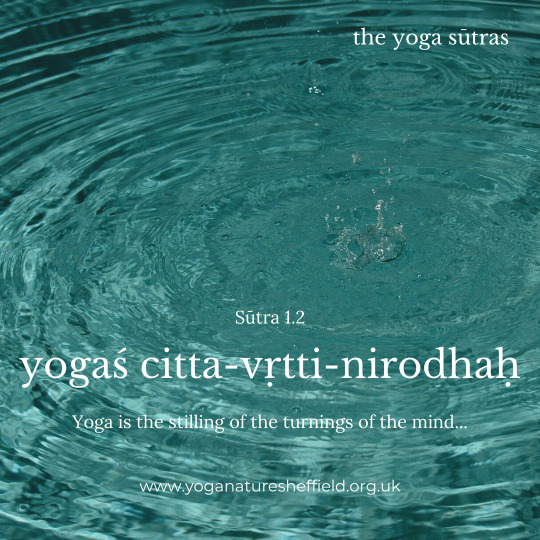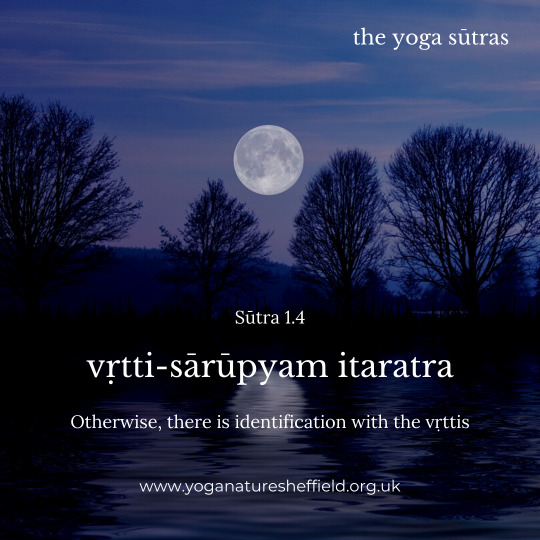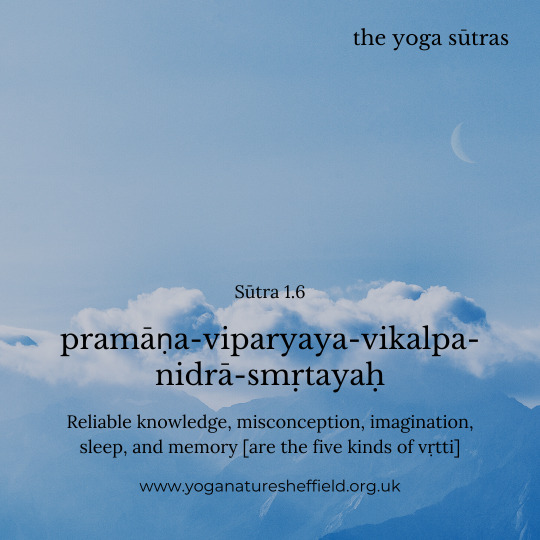#vibhuti
Text
DLF My Pad in Vibhuti Khand, Lucknow, offers a premium opportunity to invest in studio apartments and commercial spaces. Whether you're looking for a modern studio apartment or versatile commercial space, DLF Mypad provides an ideal blend of convenience and luxury. Explore prime real estate in Lucknow's commercial hub and make your investment count today. Learn more about DLF Mypad and its offerings at the link provided.
0 notes
Text
Aza X Trunk Show Exclusive: A Global Fashion Affair!





#aza#aza fashions#trunk show#fashion#usa#dubai#lashkara#rishi and vibhuti#torani#seema gujral#gopi vaid#amit aggarwal#anamika khanna#masaba#designer#luxury#luxury fashion#shop online#designer wedding dresses#designer wear
1 note
·
View note
Text

Vibhuti Narayan Mishra is pookie I’ve loved him since I was five🥰#
1 note
·
View note
Text
Jamshedpur Zonal Handball Team Selection Trials Conclude at Church School
Under-14, 17, and 19 teams selected for the regional championship; Vibhuti Adesara and Hasan Imam Malik graced the closing ceremony.
The two-day CISCE Jamshedpur Zonal handball selection trials at Church School, Beldih, concluded on Tuesday.
JAMSHEDPUR – The selection trials for the CISCE Jamshedpur Zonal handball teams concluded at Church School, Beldih, on Tuesday.
The closing ceremony was…
#शिक्षा#Church School Beldih#CISCE Zonal team selection#education#Hasan Imam Malik#Jamshedpur handball trials#Jamshedpur Under-14 team#regional handball championship#Tata Steel Sports#Under-17 team#Under-19 team#Vibhuti Adesara
0 notes
Text
Omaxe Vibhuti Khand near Gomti Nagar is a new commercial project in Lucknow by Omaxe Group. It is offering retail shops & office spaces.
For More Details
Visit: - https://shorturl.at/CLMY5
0 notes
Text
Omaxe Vibhuti Khand Lucknow | Exclusive Commercial Spaces
Introduction:
Omaxe Vibhuti Khand Lucknow offers luxury office spaces and retail stores in an excellent position, making it an amazing option for businesses and entrepreneurs alike. This building will change the way business is done in the city by focusing on providing excellent amenities and important benefits.

Location Advantages:
Ideally located in Vibhuti Khand, Omaxe makes it easy to get to important parts of Lucknow, such as commercial centers, educational institutions, healthcare facilities, and relaxation places. It is the perfect location for companies and merchants looking for easy to find because of its to major highways, which guarantees easy communication.
Apartment Overview:
A wide range of carefully designed advanced workplaces and shop spaces can be found at Omaxe Gomti Nagar Lucknow. These locations are made to adjust to the changing needs of modern companies. By using open floor plans and modern technology, each unit has been created to be useful, comfortable, and stylish, setting new standards for shopping and workspaces.
Master Plan & Floor Plan:
The master plan for Omaxe Vibhuti Khand involves Vastu Shastra principles, which make sure that the building is in balance and that good energy flows through it. Carefully planned floor designs promote efficiency and maximize the use of available space, creating an atmosphere that is beneficial to success and profitability.
Amenities:
Omaxe Vibhuti Khand Gomti Nagar Lucknow, you can enjoy a variety of services that are meant to make your work and buying more enjoyable. Everything approximately the building is designed to make it less complicated, extra comfortable, and safer for both residents and guests, from the short elevators to the reserved parking spots and the security guards who work around the clock.
Investment:
Planning to invest in our project provides an investment in the best and success, not simply real estate. Omaxe offers a profitable option for companies and investors wishing to prosper in Lucknow's developing business environment because to its excellent location, outstanding amenities, and possibility of large profits.
Conclusion:
Omaxe Commercial Project In Lucknow where style meets efficiency and success meets improvement, you may take your company or retail effort to new heights. Omaxe is in a great spot, has premium goods, and looks like it could be a good place to spend. It could create a busy business and shopping environment in the middle of Lucknow.
#Omaxe Vibhuti Khand Gomti Nagar Lucknow#Omaxe Vibhuti Khand Lucknow#Omaxe Gomti Nagar Lucknow#Omaxe Commercial Project In Lucknow#Omaxe Gomti Nagar in Lucknow
0 notes
Text
Chowki Group in Kapurthala Lucknow
"Sargam Jagran Party" is the best in Jagran, Chowki, Bhajan & Sai Sandhya, Khatu Shyam Bhajan, Ladies Sangeet & all Devotee type program in Lucknow, UP, India. ☎+91-9919805315. "Sargam Jagran Party" has been conducting Mata ki Chowki, Mata ka Jagran and Bhajan Sandya from last 10 years with lots of memories and with great success.Blessing of God and Goddess is needed to overcome every rough course of life. Everyone should conduct Mata Ki Chowki and Mata Ka Jagran to get blessing and her devine power and all the needs to be fulfilled.





“Sargam jangran Party” is one of the renowned Jagran party of Lucknow. By the Gift of God within a short passage of time period we did a lot and Its still continue. We providing services of organising all kind of spiritual events including Maa Bhagwati Jangran, Sai Sandhya, Sunder Kaand and another kind of Spiritual events.
Sargam Jangran Party is the party of all devotees that comes together for connecting devotees directly with the God and make the environment devoted. Our party’s aim is to provide bestest services so you can remember us for a long time. For remaining on top level we take care of every single step of event like best quality Singer, Magicians, Caters, Prasad and all. We always take care of your budget and organise the event in an effective way. We don’t think about our profit; we just take care, devotees of God.
We are a group of young professionals we doing our work with the perfectness so that you cannot get the chance of any objection in our work. We have best musicians, vocalist and chorus group.
youtube
youtube
youtube
youtube
Maa Bhagwati Jagran,
Maa Durga Jagran,
Bala Ji Jagran,
Mata Ki Chowki,
Sai Sandhya,
Kirtan,
Khatu Shayam Bhajan.
Shiv Gurgan.
Bala Ji Bhajan.






youtube
youtube
Mata ki chowki represent the ancient culture of Hinduism society. Mata ki chowki means praising the stories of Gods life time experiences in the form of singing. It is generally sung in Sanskrit and Hindi. It is a devotional programme conducted specially for occasions like Weeding, Engagement, Birthdays, Anniversaries or during Ganpati Pooja and Navratri festivals. In Mata ki Chowki Short time kirtan is conducted in Mata Ki Chowki and it is mostly for 4 to 5 hours. Prayee devote their respect through their prayers in the form of singing. Garlands and Matajis bhet (red color chunni) coconut and shingar with bheta. After that Aarti is done by the devotee who has kept Mata Ki Chowki. Bhog Prasad to Mataji of Kher has been offered followed by Amrit Varsha and Phoolon Ki Varsha of flowers and petals. At last prasand is shared to all people who have been there as the samapti of Mata Ki Chowki.






Any religious theme song or song related to God is refers to Bhajan which literaly means "sharing". No specific set or rules are describing for Bhajan, it is a free form of singing based on the devotee how they conduct it. According to Hinduism Bhakti, Kirtan and Bhajan all these three are connected with the vedic era specially Samaveda. Semaveda is meant to sing like a musical score which should be heard. The main motive behind conducting this Bhajan Shandya is to receive blessing of God's. Bhajan also helps to maintain possitive environment around one's selves and wish to get all their dreams fulfilled. In this singer sungs the religious song which gives the feeling to connect everyone with the God. Bhajan has been done generally at the evening time which takes max to max 3 to 4 hours. Pooja has been done by the devotee and the first stage and after that Aarti takes place and at last prasad has been distributed at last, with all this we came to the end of the Bhajan
youtube
#Best Bhajan Kirtan Group in Vikas Nagar Lucknow#Famous Bala ji ka jagran group in Vibhuti khand Lucknow#Popular Mata ki chowki Group in kursi Road Lucknow#Best Maa Bhagwati ka Jagran Group in Kanpur Road Lucknow#Famous Radha krishna jhanki group in Triveni Nagar Lucknow
0 notes
Text
डॉ. उर्मिलेश की पुण्यतिथि पर प्रतिभाओं एवं विशिष्ट विभूतियों को किया गया सम्मानित
बदायूं बल्ब में प्रख्यात कवि डॉ. उर्मिलेश की 18वीं पुण्यतिथि पर स्मृति दिवस समारोह का भव्य उद्घाटन किया गया। समारोह में प्रतिभाओं और विभूतियों को सम्मानित किया गया। मुख्य अतिथि भाजपा सांसद डॉ. संघमित्रा मौर्य, विशिष्ट अतिथि भाजपा जिलाध्यक्ष राजीव कुमार गुप्ता, विधायक महेश चंद्र गुप्ता, विधायक हरीश शाक्य, पूर्व विधायक प्रेमस्वरूप पाठक, डीएम मनोज कुमार, एसएसपी डॉ. ओपी सिंह ने मां सरस्वती के चित्र…

View On WordPress
#8th death anniversary#Eminent Poet Dr. Urmilesh 1#Memorial Day Celebration#Vibhuti Awarded#Budaun Club
0 notes
Text

UPCOMING 2 DAY FASHION & LIFESTYLE EXHIBITION IN LUCKNOW
Venue : Hotel Comfort INN , Gomti Nagar , Lucknow
Address : TC- 75V, Vibhuti Khand Rd, Vibhuti Khand, Gomti Nagar, Lucknow, Uttar Pradesh 226010
Date : 18 & 19 March 2023
Timing : 11 AM to 9 PM
indianfashionexhibition #biggestfashionexhibition #designersarees #designergowns #designerblouses #designerwear#designeroutfits #designerjewellery #designerclothing #jewellery #gowns #sarees #kurtis #latestfashion #latesttrends#partywear #casualwear #footwear #exhibitionbuzz
#UPCOMING 2 DAY FASHION & LIFESTYLE EXHIBITION IN LUCKNOW#Venue : Hotel Comfort INN#Gomti Nagar#Lucknow#Address : TC- 75V#Vibhuti Khand Rd#Vibhuti Khand#Uttar Pradesh 226010#Date : 18 & 19 March 2023#Timing : 11 AM to 9 PM#indianfashionexhibition#biggestfashionexhibition#designersarees#designergowns#designerblouses#designerwear#designeroutfits#designerjewellery#designerclothing#jewellery#gowns#sarees#kurtis#latestfashion#latesttrends#partywear#casualwear#footwear#exhibitionbuzz
0 notes
Video
youtube
భగవద్గీత 10 విభూతి యోగము | Learn Bhagavadgita | Facts Hive
#youtube#భగవద్గీత#విభూతి యోగము#bhagavadgita#bhagavadgītā#facts hive#voice of maheedhar#The Yoga of Vibhuti#divine manifestation#దశమోఽధ్యాయము#bhagavadgita chapter 10#srimad bhagavad gita#bhagavadgita audio#bhagavad gita audiobook#bhagavad gita audiobook telugu#bhagavadgita online#bhagavad gita podcast telugu#bhagavad gita podcast
0 notes
Text

DLF Vibhuti Khand Lucknow offers an excellent investment opportunity with DLF My Pad studio apartments and commercial spaces. Located in the heart of the city, DLF MyPad provides modern amenities and prime connectivity, making it a top choice for both residential and commercial purposes. Explore the benefits of owning property in this prestigious location and secure your future today.
0 notes
Text

Maha Mrityunjaya Mantra
ॐ त्र्यम्बकं यजामहे सुगन्धिं पुष्टिवर्धनम्
उर्वारुकमिव बन्धनान्मृत्योर्मुक्षीय माऽमृतात्
“Om Tryambakam Yajamahe Sugandhim Pushti-Vardhanam
Urvarukamiva Bandhanan Mrityormukshiya Mamritat॥”
Meaning : ‘We worship the Three-eyed Lord who is fragrant and who nourishes and nurtures all beings. As is the ripened cucumber is freed from its bondage, may He liberate us from death for the sake of immortality.’
Benefit : This mantra is addressed to Lord Shiva for warding off untimely death. It is also chanted while smearing Vibhuti over various parts of the body and utilized in Japa or Homa to get desired results.
Lord Shiva by Talon Abraxas
13 notes
·
View notes
Text
Tata Steel Trainees Excel at Jharkhand Table Tennis Championship
Students secure 17 medals at the 2nd Jharkhand State Ranking Table Tennis Championship.
Tata Steel Training Centre students secured 17 medals across various age categories during the 2nd Jharkhand State Ranking Table Tennis Championship held in Ranchi from July 26-28. The event was organized by the Ranchi District TT Association under the Jharkhand State Table Tennis Association’s…
#Apurba Dasgupta#Archita Dey#खेल#Dinesh Rakshit#Jamshedpur sports#Jharkhand Table Tennis#Ranchi TT tournament#Sports#sports achievements#Table Tennis Championship#tata steel training centre#Vibhuti Dhand Adesara
0 notes
Text
just finished reading The Pregnant King by Devdutt Pattanaik and it encapsulated all the thoughts I had about religion and rituals and rites so perfectly in our limited vocabulary.
the philosophy of why brahmins wear vibhuti, though now done simply for the sake of doing it. how shiva is the still, calm would and shakti the ever-changing matter UGH I LOVE IT SO MUCHHH
loved it, must read 50000000000/10
#writing#indian#sapphic#wlw#asexual#desi sapphic#desi#devdutt pattanaik#the pregnant king#reading#reading recommendations#books#books and reading#booklr#reading is sexy
4 notes
·
View notes
Text
A Short Introduction to the Yoga Sutras

The Yoga Sutras are generally considered a foundational text of the yoga tradition. In this article we examine the context and background of the text, briefly explore its structure and content, and I also offer some reflections on the text’s relevance in modern times.
Note: I have decided not to use diacritics in this article. Diacritics are those little lines and dots above and below letters that tell you how to pronounce Sanskrit words. Normally I use diacritics in my writing, as they are essential for pronouncing Sanskrit correctly. However as this article is meant for non-scholars I have decided it would be better to try and write the Sanskrit words in a way that will make them easy to read and pronounce, so as not to put anybody off!
History & Context
Most scholars these days date the Yoga Sutras to somewhere between the 2nd and 5th centuries CE, with Philipp Maas placing it in the early 5th century.
The text is attributed to a sage named Patanjali. Biographically, we know next to nothing about Patanjali. The name is a compound word formed from the Sanskrit words pata (falling, flying) and anjali (the gesture of joining the hands together in reverence).
Yoga had already been around in some form or another for many centuries by this point. Therefore, Patanjali did not ‘invent’ Yoga. Nevertheless, this is the earliest comprehensive and systematic text on the subject that has survived.
Yoga was just one darshana or school out of many in ancient India. In terms of philosophy, it shares many similarities with the Samkhya school. But whereas Samkhya tends to emphasise the use of reason and knowledge to gain liberation, Yoga emphasises practical and experiential methods.
Philosophically, both the Samkhya and Yoga schools teach a form of dualism. This is a dualism between purusha (our true Self) and prakriti (everything else, including the body and mind) and the whole point of Samkhya and Yoga in a nutshell is to guide us towards the realisation of purusha, that is, our true Self. This is true liberation or moksha in Yoga.
Most of the ancient darshanas had their own sutra text. Sutra texts are known for their brevity. Basically, sutra texts are where the most essential teachings of a school are distilled into as few words as possible. Knowledge systems were handed down orally in ancient India and thus source material was kept minimal with a view to facilitating memorisation.
Other authors would then come along and write longer commentaries on these sutra texts. The Yoga Sutras have a rich commentarial tradition spanning many centuries. The first and most well known is the bhasya commentary by a certain Vyasa. Vyasa actually means something like ‘compiler’ or ‘editor’ so that probably wasn’t his actual name!
Some scholars even argue that Patanjali and Vyasa are actually one and the same person, though others would strongly disagree with this thesis. Either way, this commentary is indispensable when it comes to making sense of the sutras, and published versions of the Yoga Sutras tend to include the bhasya commentary or at least reference it.
As a final note, many scholars now use the term pātañjalayogaśāstra to refer to this text as a whole (sutras plus commentary), because that is the name our oldest existing manuscripts use. But to keep things simple we will continue to use the name Yoga Sutras!

Structure of the Text
The Yoga Sutras are divided into the following four padas or chapters:
Samadhi Pada: This is where Patanjali defines Yoga and then describes the nature and the means to samadhi, the goal of Yoga.
Sadhana Pada: Sadhana is the Sanskrit word for practice or discipline. Here the author outlines two forms of Yoga, the kriya yoga (yoga of action) and the ashtanga yoga (the yoga of eight auxiliaries or limbs). This is also where Patanjali discusses the kleshas, five ‘afflictions’ or impediments to Yoga.
Vibhuti Pada: Vibhuti is the Sanskrit word for power or manifestation. Supra-normal powers (siddhis) are said to be acquired by the practice of Yoga. However, the temptation of these powers should be avoided and the attention should ultimately be fixed only on liberation.
Kaivalya Pada: Kaivalya literally means isolation. This is the chapter on final liberation. The Kaivalya Pada describes the process of liberation, it explains how the mind is constructed and veils the inner light of the Self.

The Goal of Yoga
Not one for a lengthy preamble, Patanjali gets stuck right in there and clearly states the goal of Yoga in the well-known second sutra:
yogas chitta-vritti-nirodhah YS 1.2
Any Sanskrit sentence allows for a number of possible translations and this one is no different. A nice and accurate one is this one from Barbara Stoler Miller:
Yoga is the cessation of the turnings of thought
The reason I say this one is accurate is because a literal meaning of vritti is ‘turning’. Ever felt that thoughts are ‘going round and round’ in your head? Well this phrase nicely captures that! The vrittis in this statement refer to thoughts, emotions, ideas and basically any cognitive act of the mind. Patanjali lists five types of vrittis. These are, once translated:
Right knowledge
Error or false knowledge
Imagination
Sleep &
Memory
All such activities of the mind are products of prakriti and are completely distinct from the true Self, purusha, that pure awareness or consciousness which we are aiming to enter into through Yoga. The means prescribed by Patanjali in the first chapter of the Yoga Sutras to still the vritti states of mind are sustained practice (abhyasa) and dispassion (vairagya).
Specifically the practice offered is meditation, or keeping the mind fixed on any particular object of choice without distraction. Patanjali then describes a number of possible forms such meditation could take. By stilling all thought, meditation removes all objects of awareness. Awareness can therefore now be aware only of itself, of its own source, the true Self or purusha. This state is known as samadhi in Yoga and Patanjali makes it super clear that this state of samadhi is the goal of Yoga and thus the whole text is focused upon achievement of that goal.

Obstacles to Yoga
Patanjali mentions five kleshas, which can be translated as impediments or obstacles to achieving samadhi and thus Yoga. These five are as follows:
Ignorance
Ego
Desire
Aversion
Clinging
In the Yoga Sutras, and indeed in ancient Indian philosophy in general, the first item in any list is the most important and fundamental. It’s the same here. Ignorance here means failing to recognise our true Self or purusha and instead identifying ourselves with our body, mind and the material world. All of the other obstacles arise from this fundamental error.

Yoga Psychology
Like most other schools of Indian thought, the Yoga school believed in the related concepts of karma and rebirth. According to this doctrine, we are caught in an endless cycle of rebirths called samsara and the purpose of following a path such as Jainism, Buddhism or Yoga is to bring an end to this cycle. Where the Yoga Sutras really shine are in interpreting this doctrine in a highly sophisticated ‘psychological’ way, to use modern terminology.
According to this Yoga psychology, the mind forms an impression of an object through the sense organs, which is called a pratyaya. Once this pratyaya or active image of this object is no longer of active interest to the mind, it becomes an inactive or latent samskara. A samskara is an imprint left in the chitta, somewhat like a sound is imprinted on a tape recorder, or an image on photographic film. In this way the vrittis, the activities of the mind, are retained as samskaras when they fade.
It is important to note that these samskaras are not just passive imprints but vibrant latent impulses that can get activated under conducive circumstances and can exert influence on a person’s thoughts and behaviours, even many years after the impression was made. What’s more, according to Yoga these samskaras can persist from previous lives. The chitta is thus something of a storehouse of these recorded samskaras, deposited and accumulated there over countless lifetimes. One is here reminded of the theory of the subconscious in modern psychoanalysis.
According to Yoga, karma is generated by the vrittis, and the vrittis, in turn, are produced by the kleshas. There is thus a vicious cycle of kleshas, vrittis and samskaras. To run through the whole cycle again to try and make it as clear as possible: vrittis are recorded in the chitta as samskaras, and these samskaras eventually activate consciously or subliminally, producing further vrittis. These vrittis then provoke actions and reactions, which in turn are recorded as samskaras, and the cycle continues endlessly, leading to much suffering along the way.
The whole Yoga project aims to bring this vicious cycle to an end and it is liberation from this mind created suffering that we are after as yogis. The Yoga Sutras are effectively a manual guiding us towards this end, this state of samadhi or complete meditative consciousness.

The Yamas and Niyamas
The second pada or chapter of the Yoga Sutras contains a famous exposition of five ethical restraints (yamas) and five ethical observances (niyamas) and these are relatively well-known in the modern yoga world. The first thing to get clear is that these yamas and niyamas are NOT original or unique to Yoga. All ascetic schools in ancient India had these ethical codes, and the exact same ones appear in Jainism for example. Sometimes, you even get more of them. Some yoga texts for instance list 10 yamas and 10 niyamas.
The five yamas listed in the Yoga Sutras are:
Ahimsa (non-harming)
Satya (truth telling)
Asteya (non-stealing)
Brahmacharya (chastity or celibacy)
Aparigraha (non-acquisitiveness)
The five niyamas are:
Shauca (purity or cleanliness)
Santosha (contentment)
Tapas (self-discipline)
Svadhyaya (study)
Ishvarapranidhana (devotion to the Ishvara or Lord)
Many of these could do with further explanation and commentary but there is not space in this present article. The other thing I want to stress is that these yamas and niyamas were not seen as optional extras for yogis. Rather, these were the bedrock of fruitful yoga practice. Patanjali and others refer to them as the mahavratam or ‘great vow’. Importantly, having listed the yamas, Patanjali devotes an entire sutra to reiterating just how central and non-negotiable these yamas are. Once translated, this sutra reads as follows:
[These yamas] are considered the great vow. They are not exempted by one’s class, place, time or circumstance. They are universal. YS 2.31
So, regardless of your social status, regardless of where you live, in which time period you live, and any other extenuating circumstances (such as your career), adherence to the yamas, including especially ahimsa, the foundation of them all, is an essential part of being a yogi as defined by Patanjali’s system.
Vyasa is even more emphatic in his bhasya commentary to the Yoga Sutras, and it is here that the link between ahimsa and vegetarianism is explicitly and unequivocally made, and several examples are brought to bear. Refer to the work of scholar Jonathan Dickstein to read more about the strong case for vegetarianism made in Patanjali Yoga.

The Ashtanga Yoga
These yamas and niyamas are just the first two parts of Patanjali’s famous ashtanga or eight-part path. I would first like to clarify that this systematisation of yoga into a series of angas (a word translated by some modern scholars as ‘auxiliaries’ but more commonly rendered as ‘limbs’) was again not novel to Patanjali. Throughout the yoga tradition we find various similar schemes, predating and postdating Patanjali, including fourfold, fivefold, sevenfold and even fifteenfold schemes. I would also like to stress that, despite sharing the same name, this ashtanga yoga bears little relation to the modern postural form of yoga known as Ashtanga.
Following the yamas and niyamas then, we then have the following six angas:
Asana (posture): At last I hear you cry, postures! In Patanjali’s day meaning a steady and comfortable seated posture, asanas today comprise a set of physical exercises which stretch and strengthen the body. It is this aspect of yoga that has been most visibly exported to the West but too often stripped from its context as just one ingredient in a more ambitious and far-reaching sequence.
Pranayama (breath control): Prana refers to the universal life force whilst ayama means to regulate or control, but it can also mean to expand and lengthen. Prana is the vital energy needed by our physical and subtle layers, without which the body would perish. It is what keeps us alive. Pranayama is thus the control or expansion of prana through the breath, depending on which definition of ayama you use.
Pratyahara (withdrawal of the senses): This limb further deepens the above process by removing consciousness from all engagement with the senses (sight, sound, taste, smell and touch) and sense objects.
This is followed by the final three limbs collectively known as samyama: Dharana (concentration, fixation), Dhyana (meditation), and finally Samadhi (the latter of which Patanjali further divides into seven rather esoteric stages). These last three limbs are essentially different degrees of concentrative intensity and culminate in the realisation by the Self of its own nature.
Just to reiterate one more time, it is this Self-realisation, the state known as samadhi, that is the true goal of Yoga.

Relevance of the Yoga Sutras for Today
In this brief introduction we have of course only scratched the surface of this incredible text, and there is much more that could be said. But for now I want to end with some concluding reflections on the continuing relevance of the Yoga Sutras in the modern world.
One question that arises is whether Patanjali was prescribing a strictly ascetic path. And indeed, the general scholarly consensus has usually been to associate Patanjali's Yoga exclusively with extreme asceticism, mortification, denial and renunciation. However, there are dissenting vocies. For example, Ian Whicher has repeatedly and passionately argued that Patanjali's Yoga can be seen as enabling a more responsible living in and engagement with the world, and that Patanjali was not advocating total renunciation. For Whicher, following the path of Patanjali can lead one towards that integrated and embodied state of liberated selfhood whilst living, a state known as jivanmukti.
Regardless of whether Patanjali was historically preaching ascetism or not, the fact remains that the Yoga Sutras are full of valuable ideals and tools for the practitioner living in the modern world. Let’s face it though, this is a challenging path. As a scholar and practitioner I often perceive a huge disconnect between the kind of yoga I am seeing on the likes of Instagram and the teachings of the Yoga school as presented in the Yoga Sutras. After, all, the former is highly focused on body image, whereas the Yoga of Patanjali is all about dissociating ourselves from our body and mind and recognising our true Self. However, this does not mean that the two are necessarily irreconcilable.
Though there is absolutely no historical evidence that Patanjali and his followers were practicing postural yoga (that didn’t come until later with the emergence of the Hatha tradition) nowhere in the Yoga Sutras does it say that physical exercise cannot be part of one’s yoga practice. We just have to remember that as far as Patanjalian Yoga is concerned, such postural activity is just a further means or method on the path towards samadhi or full meditative awareness. This is why any so-called yoga that does not contain more internalised meditational practices but which focuses solely on physical exercise should not really be called yoga.
The Yoga Sutras remains undoubtedly the most famous ancient yoga text, and it is studied to some extent in probably every yoga teacher training course. To be honest, I personally feel that too much emphasis is placed on the Yoga Sutras, at the expense of other branches and other texts of the tradition. The Tantric texts, in particular, are still sorely neglected. One of my own aims in my work is to try and decentre the Yoga Sutras and provide a much wider overview of the history and philosophy of yoga and the other related schools of ancient India. This is not to take anything away from the Yoga Sutras, however, as it is without doubt an extraordinary text that continues to be highly relevant in the 21st century.
Further Reading
I have already mentioned some scholars whose work you may wish to refer to, such as Philipp André Maas, Ian Whicher and Barbara Stoler Miller. For a translation and commentary on the Yoga Sutras that is both scholarly accurate and reasonably accessible I would recommend that of Edwin Bryant published by North Point Press.
7 notes
·
View notes

